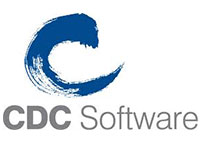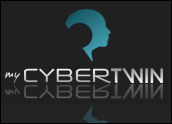
If you are a regular reader, you know that from time to time I write about things that appear to be tangentially related to CRM — at best. My favorite alternative to straight ahead research and reporting on CRM is a strange sounding thing called “peak oil.”
For those of you not familiar with the idea, peak oil refers to a not-so-hypothetical ceiling on how much oil we can coax out of the ground daily. Indirectly, it also refers to the fact that we have not found nearly enough oil to replenish supplies we are consuming, and we never will. There’s only so much of it. While there is undoubtedly oil left in the ground to be exploited, there isn’t enough in part because global demand and consumption keeps rising. That leaves a gap that now goes unfilled daily.
Actually, economics, like nature, hates a vacuum, and the gap is filled every day by several methods. First and most obvious is higher prices at the pump, at the supermarket, at the travel agent and just about everywhere else. As we were all taught, higher prices depress demand, and higher prices reach deep into everything. I read a while ago that it takes about seven gallons of petroleum to make a car tire. Have you bought tires lately? Rubber, plastics and anything made of a carbon polymer is affected by crude prices.
The second way the vacuum is filled is through clever substitution. The word “alternative” conjures up jury-rigged contraptions in old movies, so I don’t like to use it, but alternatives or substitutions can take almost any shape, from walking or taking public transportation to eating local to avoid the cost of transportation built into meat and produce.
Of Beef and Chicken
Economists like the idea of substitutions, and they can spot their use in everyday life. For instance, if beef costs too much, demand for chicken and fish might rise as people shift their demand patterns.Switching from meat to chicken is relatively easy, assuming you have a flexible palate. You store it in the refrigerator the same way as beef and use the same cooking and eating utensils, so it’s no big deal. You can say that your infrastructure costs for cooking are a wash, which makes the switching easy.
It’s not the same in business. When it becomes expensive to travel, for instance, we tend to pay higher travel prices because switching to something else requires a more serious investment in infrastructure. But this switching cost drives so much opportunity for front-office software makers, especially the cloud companies.
Customer-facing applications are the chicken and fish of business for the foreseeable future. I’ve read reports and books on the subject that indicate the cost of a new energy-efficient alternatives based infrastructure would cost in the neighborhood of US$20 trillion. I expect we will spend that money because we don’t have many choices, but it will take years. It will be the work of a lifetime for people entering the workforce today, just as technology has been mine.
If you go to this link, you’ll see credible information that peak oil happened in 2006, it’s already in our rearview mirrors, and it’s why we’re paying high gas prices. More significantly, the cost of energy is now the most significant determinant of economic well-being. Note that while fuel prices are declining now, so is economic activity. Energy prices hit a zenith in May, which put the brakes on. There’s significant latency in the economy, but wait until the end of the year and observe. You won’t like what you find. There will be lower gas prices, but also lower hiring rates and the signs of an emerging downturn.
The Hows and Whys
Meanwhile, back to the alternatives idea. Some of the most credible alternatives I’ve seen for getting carbon and energy (and their costs) out of front-office business processes exist in our industry. Whether it’s social media and analytics-driven customer contact or Web conferences, VoIP or video used as a strategic marketing tool, all the solutions I know of hang off a CRM platform.
I take briefings every day from vendors who are new to the market and from seasoned veterans. They all have a basic blind spot when it comes to talking about their solutions. They’re great at telling me what they have and how it works, but when it comes to the practical application of their wares, most are tongue-tied. I tell them that they need to include phrases that start with “So that you can …” — as in, “So that you can save money while delivering on a customer need.”
In the front office, we’ve moved beyond the early adopter phase for most categories; an exception might be social CRM. Later adopters are a more conservative lot and tend to ask more often for the return on investment (ROI). Over the last 40 years we’ve automated nearly every aspect of business and usually justified the cost of automation technology through headcount reduction. In the near future, I expect we’ll be justifying new purchases through cost avoidance related to energy.
What’s interesting to me is that almost all of the technologies introduced in the front office in the last decade will play a role, but those roles were hardly envisioned by their creators.

























































